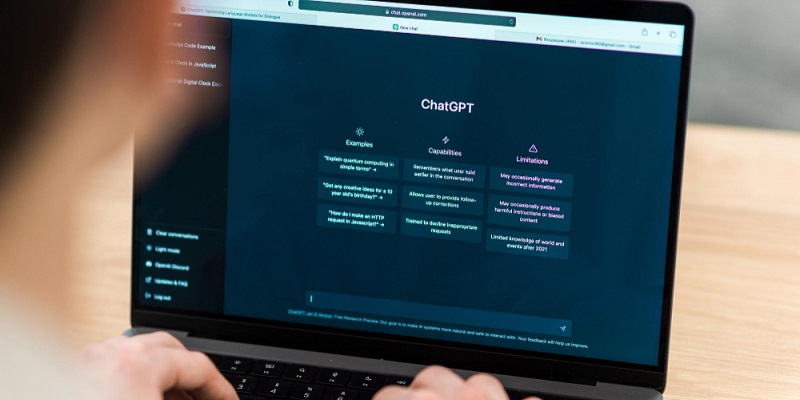In today’s fast-paced business environment, employee learning and development has become an intrinsic aspect of organizational growth and success. Organizations need to boost employee skill sets and knowledge through effective training programs and tools. Innovative technologies now offer new ways of developing employees and helping them achieve their full potential, and ChatGPT is one such technology. ChatGPT is a powerful AI-powered learning management system that provides an immersive, interactive learning environment that is flexible and customizable. In this article, we will explore the benefits of ChatGPT for employee learning and development, the advantages for employees, implementing ChatGPT as a learning tool, gathering feedback, and integrating it into an overall learning and development strategy.
Benefits of Chat GPT for Employee Learning and Development
There are numerous benefits to incorporating Chat GPT into an organization’s training and development initiatives. Below are some of the advantages:
Flexibility to Create Topic-Specific Channels: One significant advantage of ChatGPT is the ability to create customized, topic-specific channels for employee learning initiatives. This means that each employee can be directed to the most appropriate information according to their job function or specific needs. By creating channels that cater to specific needs, ChatGPT ensures that training initiatives are more impactful.
Diverse Multimedia Content Options: Another major benefit of ChatGPT is the platform’s diverse range of multimedia content options. Organizations can design engaging notes, documents, videos, or quizzes to keep the employees interested, deliver information in an easy-to-understand way, and increase engagement levels. This range of multimedia ensures that the material is presented in a way that caters to all types of learning styles.
ChatGPT encourages employee knowledge sharing, which can lead to more effective learning. This feature allows employees to share their insights, ask questions, and contribute to the learning process. Encouraging employees to share their knowledge helps to contribute to the culture of learning in the organization.
Advantages of ChatGPT for Employees
The benefits of ChatGPT are not limited to organizations alone. It is also an excellent learning tool for employees, and below are some of its advantages:
Learning at One’s Own Pace: One of the biggest advantages of ChatGPT is the ability to learn at one’s own pace. This is a great feature because employees can learn as and when their schedules permit. They will not have to sacrifice their off-duty hours to learn new things. Additionally, when employees can learn at their own pace, it increases their retention of material and engagement with it.
Engaging in Collaborative Discussions: Another advantage of ChatGPT is the ability for employees to engage in collaborative discussions that can lead to new insights and ideas. ChatGPT provides a chat-based platform where employees can communicate, brainstorm, and collaborate with colleagues to find better solutions. This kind of collaboration fosters employee engagement and overall development.
Sharing Their Own Expertise with Colleagues: ChatGPT allows employees to actively share their expertise with colleagues. When employees share their experiences and knowledge about a particular topic, they can make relevant connections that others may not have known. This kind of knowledge-sharing can contribute to team-wide continuous improvement.
Steps for Implementing ChatGPT as a Learning Tool
Implementing ChatGPT as a learning tool in an organization is an excellent idea. However, there are several steps that need to be taken to ensure a successful integration. Below are some steps that need to be taken into account:
Determining Learning Objectives
The process begins by identifying the specific learning objectives that you want to address through ChatGPT. This will help in creating appropriate channels with relevant topics and materials.
Ensuring user-friendliness of the platform is essential for employees to actively engage with ChatGPT. The platform should be easy to navigate, and the content should be presented in a clear and easily understandable format. Additionally, notifications and reminders can help employees to stay on track.
Encouraging On-Demand Support Utilization
The power of ChatGPT lies in its ability to provide on-demand support. Therefore, it is recommended to encourage employees to use ChatGPT as a resource for support. This can help increase the adoption of the platform.
Gathering feedback and continuous improvement are crucial for the ChatGPT program’s success. Regularly collecting feedback from employees and monitoring analytics can provide valuable insights for improving the program.
Integration of ChatGPT into Overall Learning and Development Strategy
ChatGPT should be integrated into the overall learning and development strategy of the organization. It should be considered an additional tool in the arsenal rather than the only tool. Moreover, it is essential to measure the effectiveness of ChatGPT for continuous improvement across the organization.
In conclusion, ChatGPT offers several advantages for employee learning and development. The AI-powered learning management system delivers tailor-made and interactive learning experiences that are adaptable and user-friendly. With ChatGPT, organizations can promote a culture of learning and continuous improvement. It is an efficient solution for employee development and growth, offering employees the chance to learn at their individual pace, participate in collaborative discussions, and share their knowledge with coworkers. Companies can incorporate ChatGPT into their learning and development strategy to accomplish sustainable growth and success.

